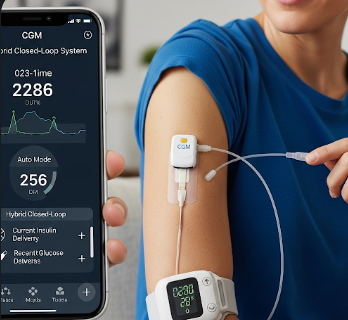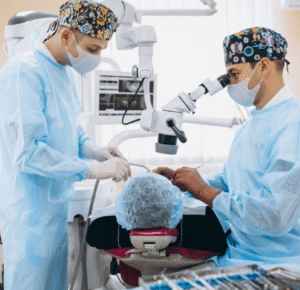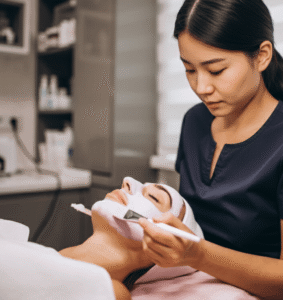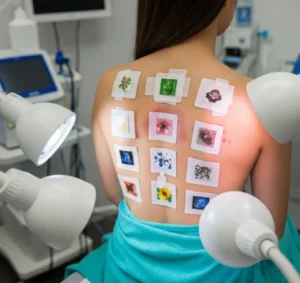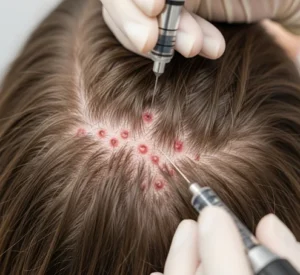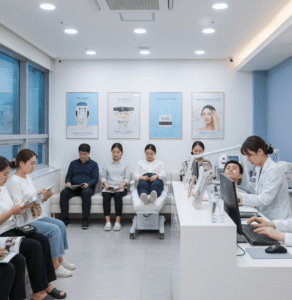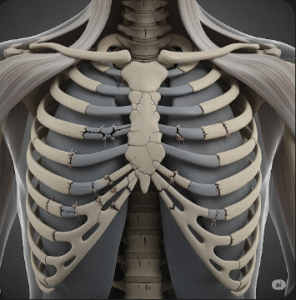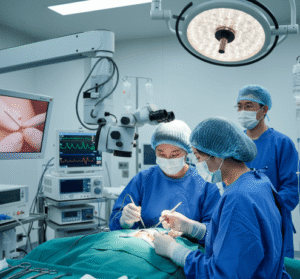Overview
Continuous Glucose Monitoring (CGM) is an advanced diabetes management technology that continuously measures glucose levels in real-time throughout the day and night. A Hybrid Closed Loop (HCL) system, also known as an “artificial pancreas,” integrates CGM data with an insulin pump, automatically adjusting insulin delivery based on glucose readings.
Importance of CGM and HCL systems:
- Provides real-time glucose trends, reducing hypoglycemia and hyperglycemia episodes.
- Enhances diabetes management and patient quality of life.
- Supports tight glycemic control and reduces long-term complications.
- Facilitates automated insulin delivery, minimizing manual intervention.
In South Korea, CGM and HCL systems are increasingly adopted in endocrinology clinics, with advanced devices approved for type 1 and type 2 diabetes patients. Integration with digital health platforms and smartphone apps supports monitoring and data analysis.
Why It’s Done
CGM and HCL systems are used to improve glucose management and prevent diabetes-related complications.
Common indications include:
- ➤ Type 1 diabetes: Daily insulin management and prevention of hypoglycemia.
- ➤ Insulin-dependent type 2 diabetes: Optimizing insulin therapy and glycemic control.
- ➤ Frequent hypoglycemia or hyperglycemia despite standard therapy.
- ➤ Dawn phenomenon or nocturnal glucose fluctuations.
- ➤ Patients aiming for tight glycemic control for pregnancy, exercise, or long-term health.
Benefits for patients:
- ✔️ Continuous glucose data for better insulin dosing decisions.
- ✔️ Automated insulin adjustments in HCL systems reduce hypoglycemia risk.
- ✔️ Minimizes frequent finger-prick testing.
- ✔️ Provides data visualization and trend analysis for both patients and clinicians.
- ✔️ Improves overall diabetes self-management and quality of life.
Alternatives
While CGM and HCL systems are advanced, alternatives include:
- ➤ Self-monitoring of blood glucose (SMBG): Finger-prick testing multiple times per day.
- ➤ Insulin pens and manual pumps: Require patient-administered doses.
- ➤ Continuous subcutaneous insulin infusion without CGM: Traditional insulin pump therapy.
- ➤ Diet and lifestyle management alone: Limited without technological support.
- ➤ Intermittent scanning CGM devices (Flash glucose monitoring): Measures glucose but doesn’t provide automated insulin delivery.
Key point: CGM and HCL systems are superior for real-time monitoring, trend analysis, and automated insulin control, offering better glycemic outcomes.
Preparation
Proper preparation ensures accurate monitoring, safe insulin delivery, and patient readiness.
Steps include:
- ✅ Medical assessment: Evaluate diabetes type, insulin regimen, and comorbidities.
- ✅ Device selection: Choose CGM and HCL system based on needs, insurance coverage, and lifestyle compatibility.
- ✅ Training: Patients must learn sensor insertion, calibration (if required), pump use, and alarm management.
- ✅ Baseline data collection: Finger-prick glucose monitoring may be required initially for calibration and comparison.
- ✅ Patient counseling: Discuss expected benefits, limitations, troubleshooting, and emergency protocols.
Important: Proper preparation ensures device accuracy, safety, and optimal glucose control.
How It’s Done
Continuous Glucose Monitoring (CGM):
- Sensor insertion: Small sensor inserted under the skin (usually abdomen or arm).
- Transmitter attachment: Sends glucose readings wirelessly to a display device or smartphone app.
- Data monitoring: Tracks glucose levels in real-time, showing trends, rates of change, and alerts for hypo/hyperglycemia.
- Calibration (if needed): Some CGM devices require periodic finger-prick measurements.
Hybrid Closed Loop (HCL) System:
- Integration with insulin pump: CGM data feeds directly into the insulin pump.
- Automated insulin delivery: Pump adjusts basal insulin based on CGM readings.
- Manual bolus administration: Patient still administers insulin for meals, though some advanced systems offer semi-automated bolus features.
- Alerts and alarms: Notify patient of rapid glucose changes, sensor issues, or insulin delivery problems.
Duration: Continuous use; sensor replacement typically every 7–14 days depending on device.
Hospital stay: Not required; outpatient management with regular follow-ups.
Key point: CGM and HCL systems provide continuous, automated glucose management, reducing patient burden and improving outcomes.
Recovery & Post-Use Care
While not invasive surgery, proper sensor and device care is essential.
Immediate care:
- Monitor insertion site for redness, swelling, or infection.
- Ensure adhesive securement to prevent dislodgement during activity.
Short-term care:
- Regular sensor replacement and site rotation.
- Follow pump maintenance and battery charging protocols.
- Respond promptly to device alerts or calibration requirements.
Long-term outcomes:
- Consistent glucose control reduces risk of diabetes-related complications such as neuropathy, retinopathy, nephropathy, and cardiovascular disease.
- Enhances patient confidence and adherence to diabetes management.
- Enables data-driven adjustments for personalized treatment plans.
Important: Continuous monitoring and device maintenance ensure safety, accuracy, and optimal diabetes control.
Possible Complications / Risks
CGM and HCL systems are generally safe but may have minor complications or challenges:
- ⚠️ Skin irritation or infection at sensor insertion sites.
- ⚠️ Sensor dislodgement during physical activity or water exposure.
- ⚠️ Calibration errors or data discrepancies in some devices.
- ⚠️ Technical issues: Pump malfunction, connectivity loss, or battery failure.
- ⚠️ Hypoglycemia or hyperglycemia if sensor readings are inaccurate or system fails.
- ⚠️ Cost and accessibility: Advanced devices can be expensive and require insurance or reimbursement.
In South Korea, CGM and HCL devices are regulated, prescribed by endocrinologists, and supported with training programs, minimizing risks and improving patient outcomes.
Treatment Options / Clinical Relevance in Korea
CGM and Hybrid Closed Loop systems are rapidly advancing in South Korea as part of integrated diabetes care.
Key features:
- 🏥 Approved devices available through endocrinology clinics and hospitals.
- 🏥 Integration with digital health platforms for remote monitoring and telemedicine support.
- 🏥 Supports both type 1 and insulin-dependent type 2 diabetes management.
- 🏥 Reduces hospital visits for glucose-related complications through real-time monitoring.
- 🏥 Part of personalized diabetes care, combining lifestyle counseling, insulin therapy, and technology.
Highlights in Korea:
- ✔️ Advanced CGM devices with high accuracy and user-friendly interfaces.
- ✔️ Hybrid Closed Loop systems provide automated insulin delivery and trend-based alerts.
- ✔️ Widely supported in major hospitals like Samsung Medical Center, Asan Medical Center, and Seoul National University Hospital.
- ✔️ Enhances long-term glycemic control, reduces hypoglycemia risk, and improves quality of life.
- ✔️ Supported by training programs for patients and healthcare professionals.
Highlights
- ➤ CGM continuously monitors glucose levels in real-time, improving diabetes management.
- ➤ Hybrid Closed Loop systems integrate CGM with insulin pumps for automated insulin delivery.
- ➤ Indicated for type 1 diabetes, insulin-dependent type 2 diabetes, frequent glucose fluctuations, and tight glycemic control.
- ➤ Alternatives include finger-prick glucose testing, insulin pens, traditional insulin pumps, and lifestyle management.
- ➤ Preparation involves medical assessment, device selection, patient training, and counseling.
- ➤ Devices require monitoring, site care, calibration, and troubleshooting for optimal performance.
- ➤ South Korea provides regulated, advanced CGM and HCL systems with hospital support, training, and integrated diabetes care.

